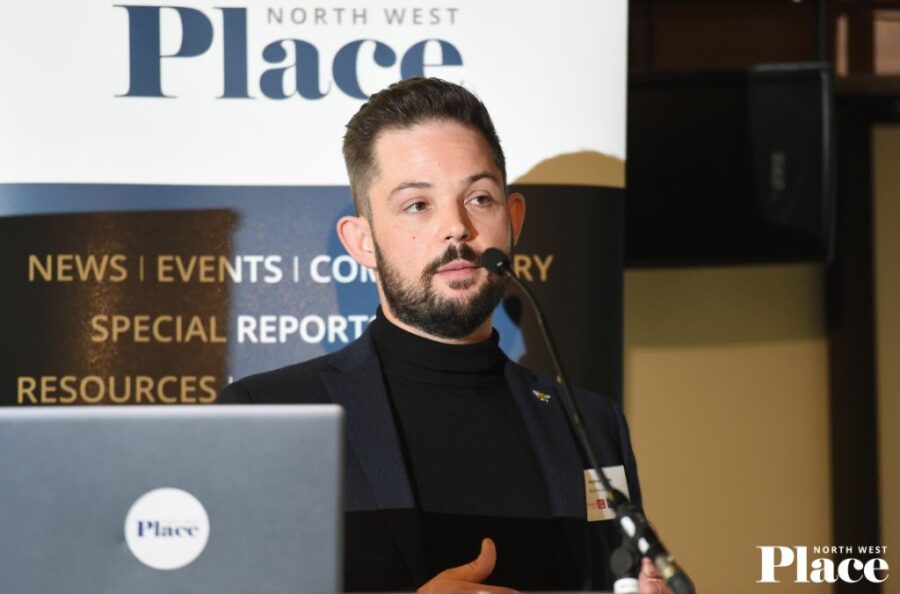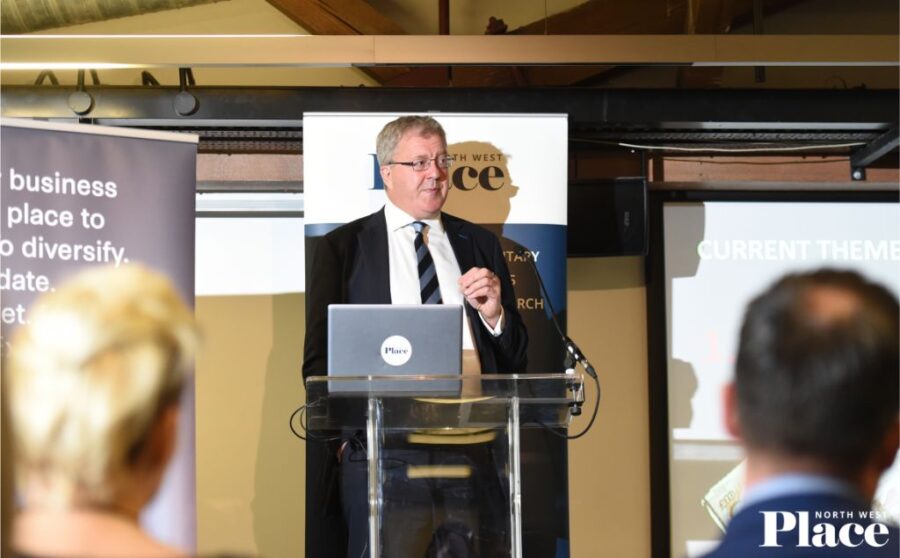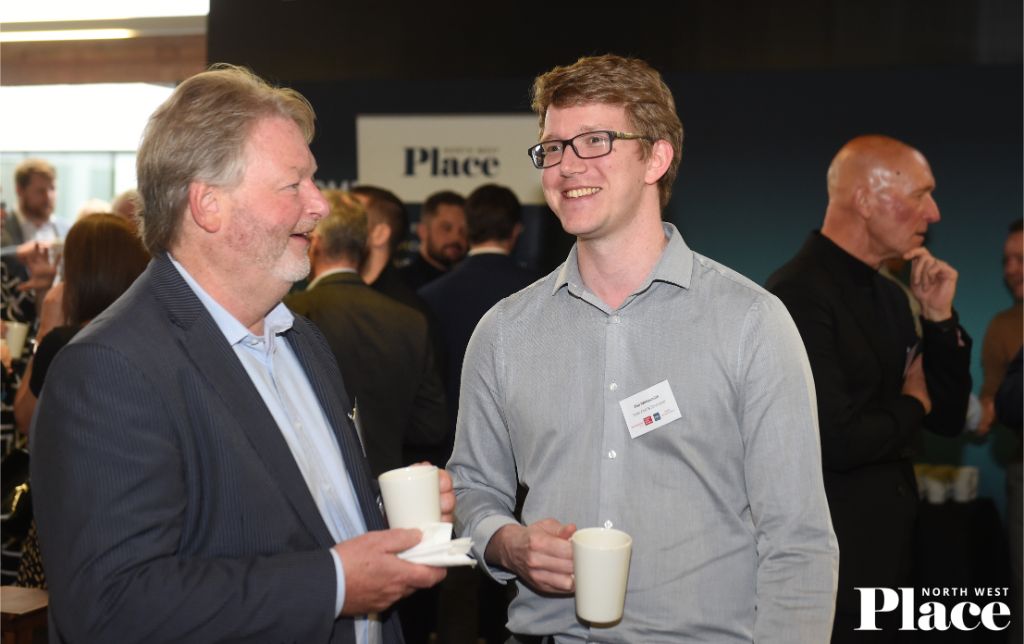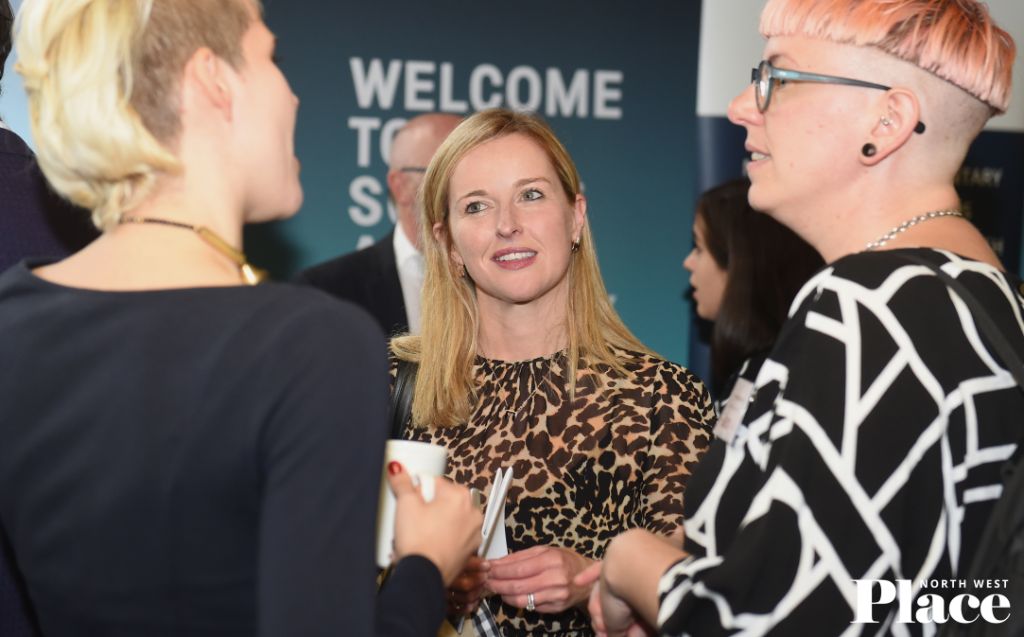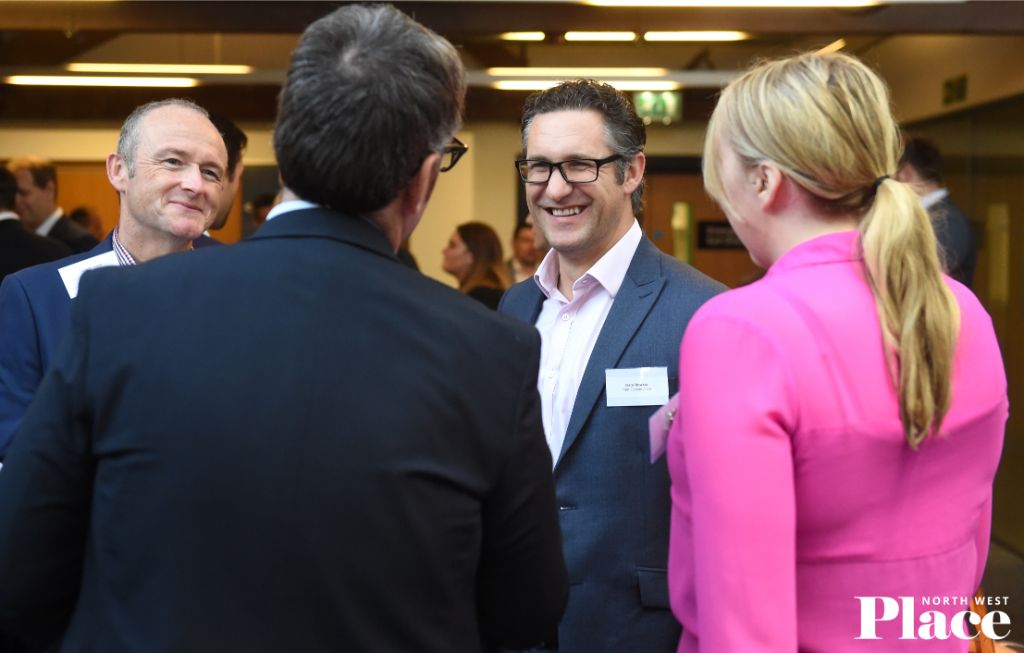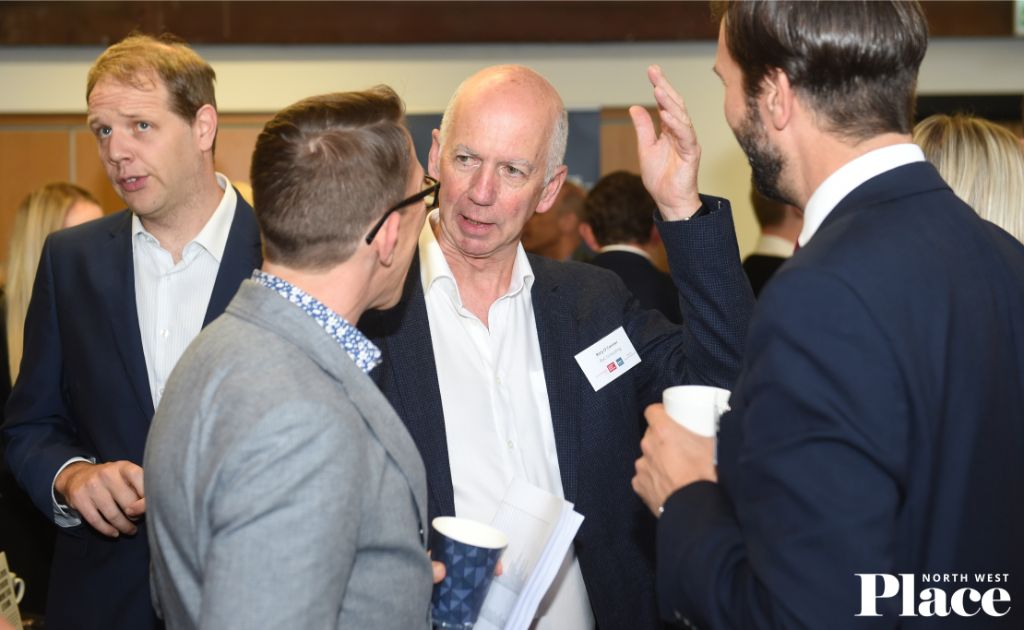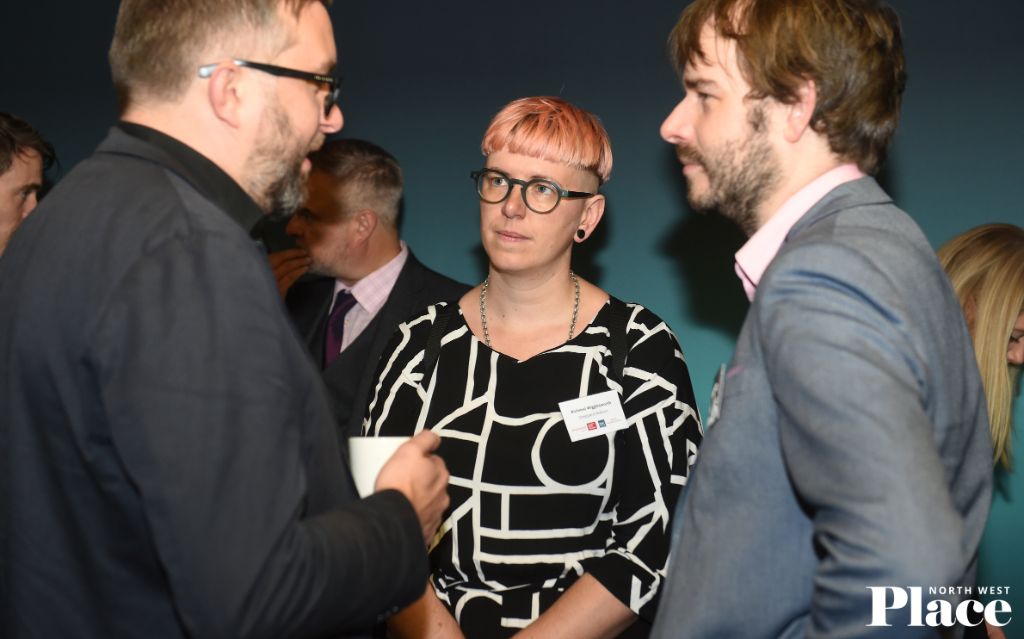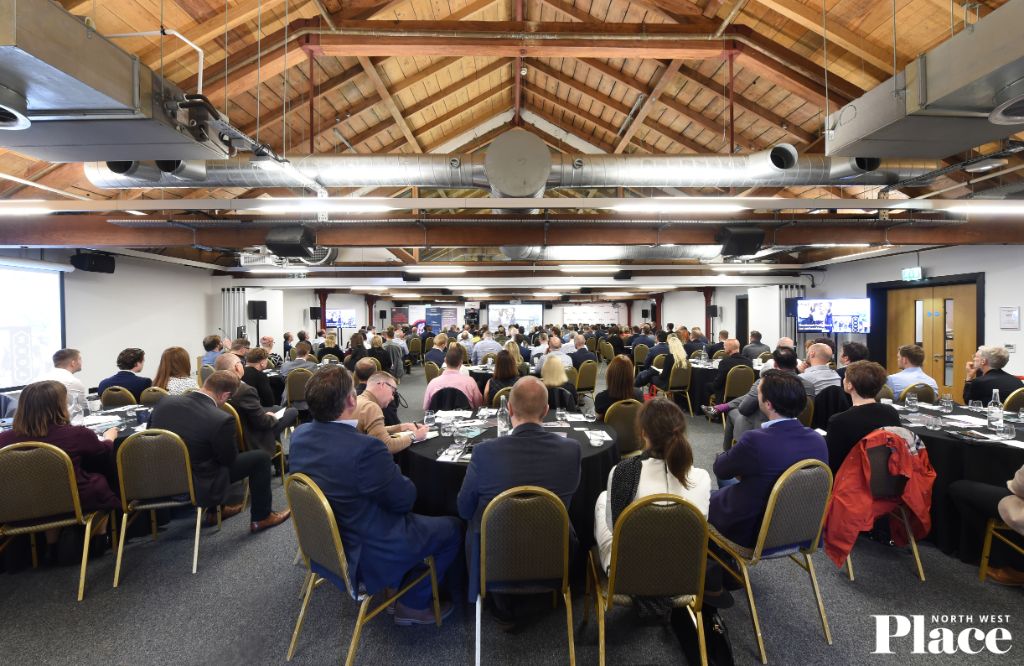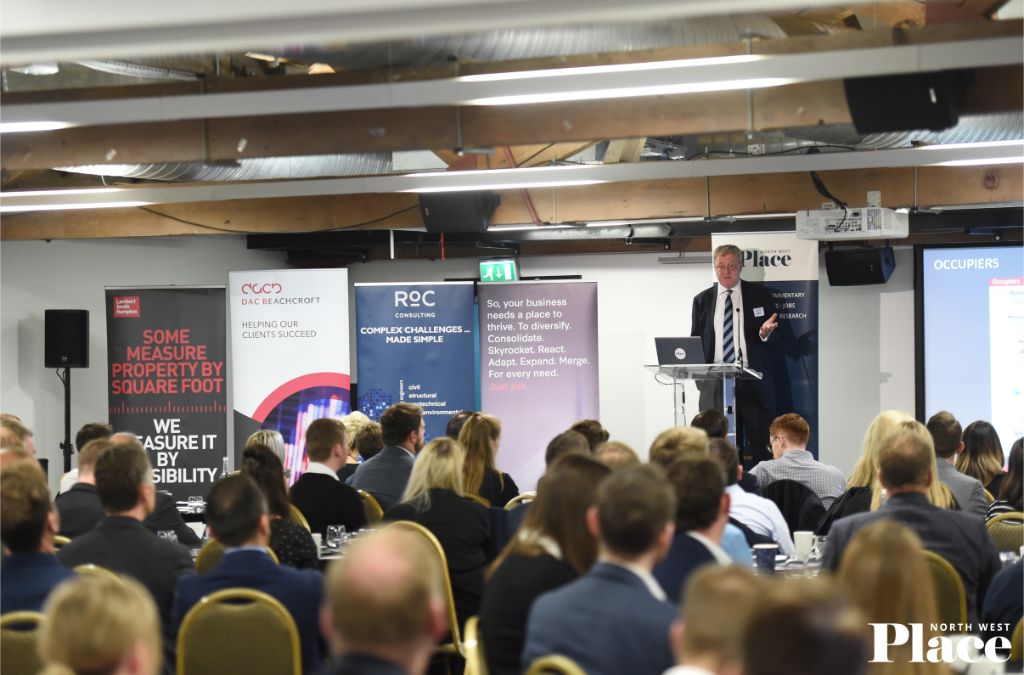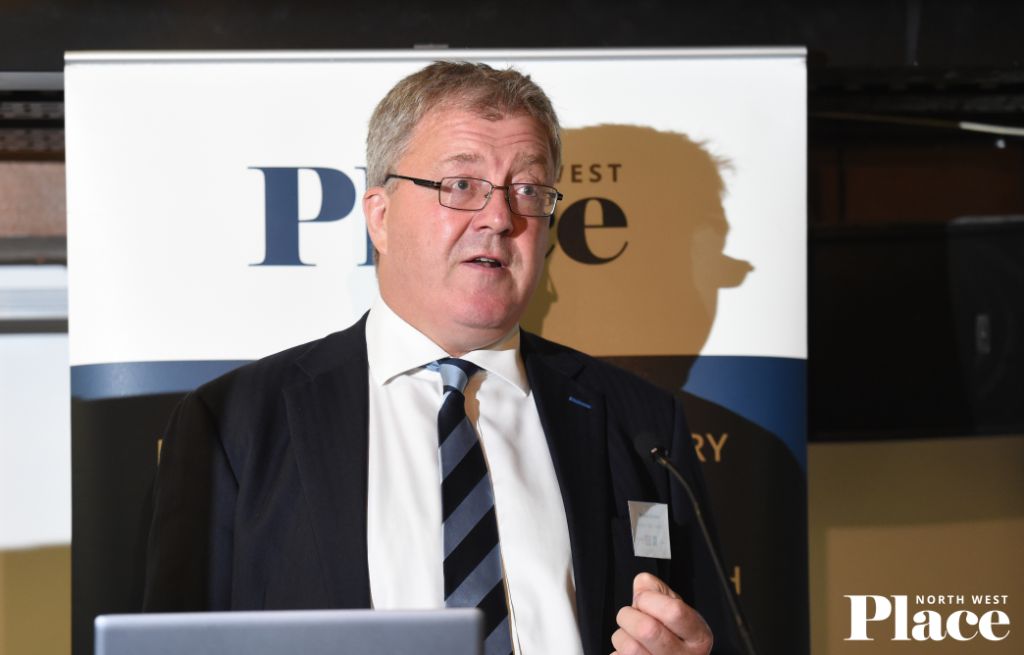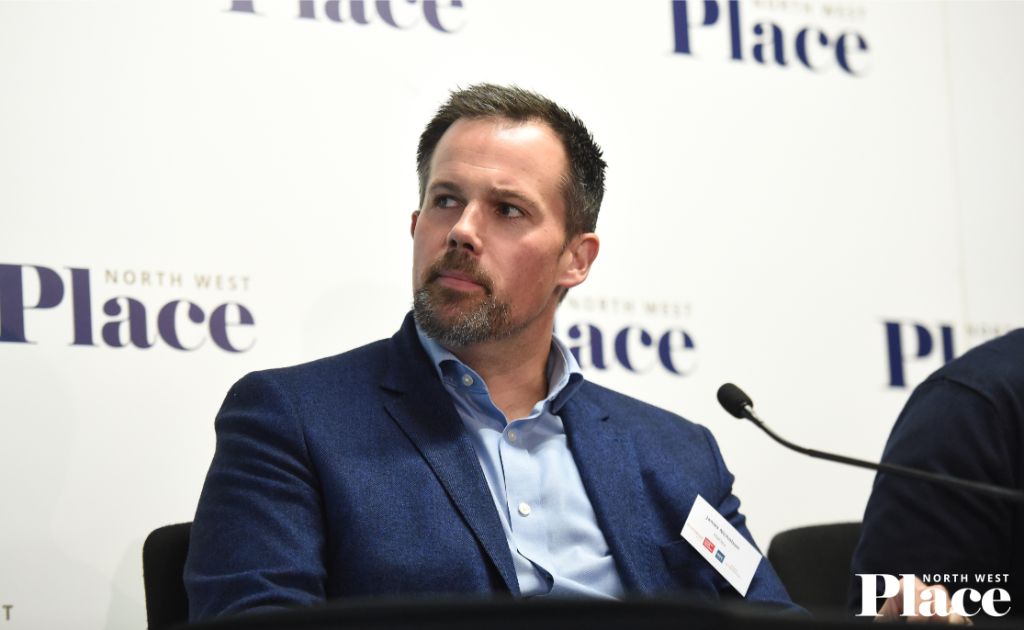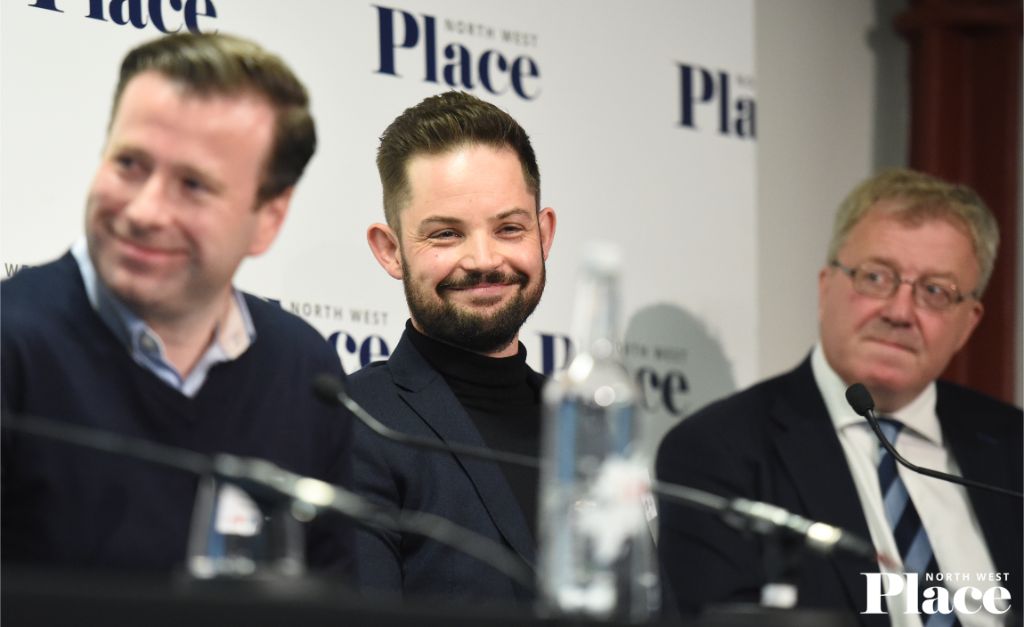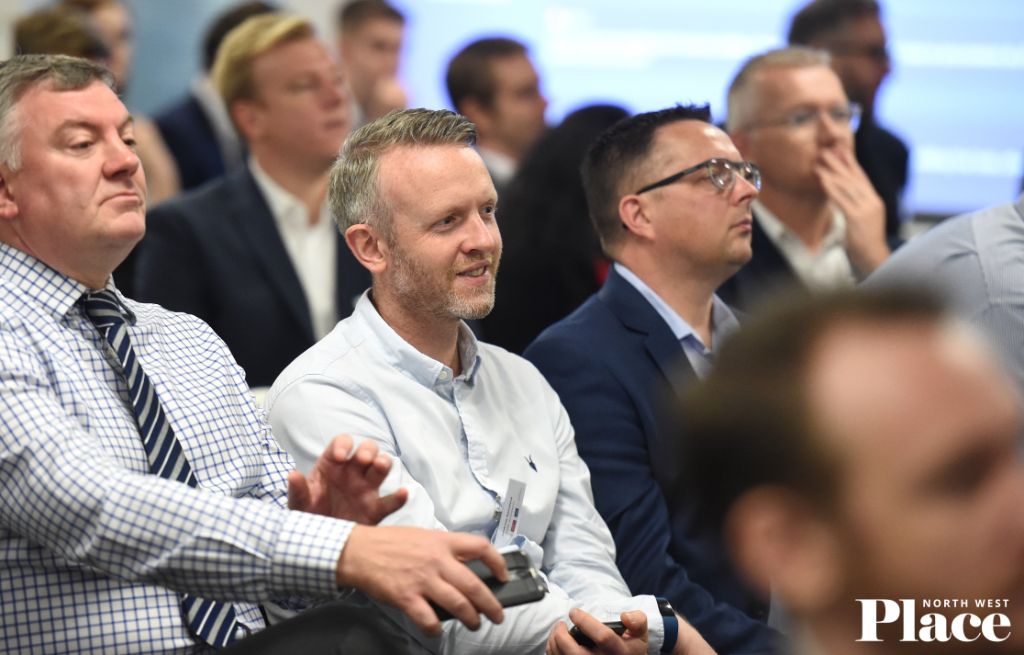Event Summary
Manchester Offices + Workspace Update | Summary, slides + photos
People-focussed workplaces, co-working and a tech-based future were the hot topics at this Place North West event.
More than 150 people attended the half-day conference at Manchester’s Science & Industry Museum, with speakers including Andrew Cooke, regional director at Bruntwood Works; Andrew Gardiner, director of office advisory at Lambert Smith Hampton; James Nicholson, managing director at Harlex; Chris Reay, property director at MediaCityUK; Phil Doyle, director at 5plus Architects; Philip Westwood, director at Overbury; Richmal Wigglesworth, associate at Sheppard Robson and Cassandra Wheeldon, director of partnerships at WiredScore.
The event was sponsored by Bruntwood Works, DAC Beachcroft, Lambert Smith Hampton, and RoC Consulting, and was chaired by Place North West editor Jessica Middleton-Pugh.
Space as a service
Andrew Cooke of Bruntwood Works gave a presentation highlighting customer needs as the focus for office developments, and discussed the importance of providing “space as a service.”
- He said: “There are six key pillars we’ve found to creating an outstanding customer experience. They are wellbeing, technology, art, biophilia, amenity, and sustainability”
- “The outside of the building is just as important as the inside in creating a ‘location’. The refurbishment which we’re doing at [pin url=”https://explore.deetu.com/pnw/#111-piccadilly”][/pin]111 Piccadilly has a social space inside a jewel-like structure which protrudes outside the ground floor. Also, the whole building will be lit with changeable lights that customers and the public can change through social media”
- According to Cooke, technology is key, but “it has to respond to the customer experience in regard to comfort and facilities management. There are sensors going into our buildings that will monitor air quality and provide security.” Bruntwood’s digital platform The Collective has been rolled out across its portfolio to encourage further collaboration and communication to “inform future decisions”
Small offices dominate
Cooke was followed by Andrew Gardiner from Lambert Smith Hampton who provided an overview of office take up and the future of Mancunian hot spots.
- “Manchester has the largest supply of grade A office space in the Northern Powerhouse, whilst Liverpool has the largest share of grade B and C. Manchester currently has 1.57m sq ft of offices currently under construction and 63% of that is pre-let”
- “Smaller deals underpin the market. Transactions for offices under 5,000 sq ft made up 80% of the overall take-up. This is consistent with 2017 as well”
- With the amount of companies wanting to move into Manchester because of the city’s “ability to draw and retain people”, rents are set to increase. “Current office rates are between £30 to £35/sq ft but I predict that this will raise to £40 over the next 12 months”
- “In the Northern Quarter there has been an influx of creative and tech companies and it only attracts more people. The rent in the area has grown 20% above other parts of Manchester. With only 60,000 sq ft of space to be developed and 100,000 sq ft needed there, will the Northern Quarter ‘sell out’ and will new office schemes take its soul away?”
Keeping staff, and keeping staff happy
Cooke and Gardiner then joined a panel featuring Chris Reay and James Nicholson.
- Reay said of MediaCityUK that “it’s about to launch its second phase with a million sq ft to be developed over 10 years.” He went on: “We’re the largest single owned estate and want to become a tech-enabled smart city by implementing lamp posts that monitor air quality and sensors to track footfall on top of developing more co-working sites and offer both a business development and a community aspect to the area”
- “Transport is Manchester’s greatest risk,” said Cooke. “It’s creaky and a nightmare at peak times. Flexible working is a solution to this and being more agile is the future of offices at it can offer more health and wellbeing benefits for our staff.” Reay agreed and questioned is “car parking the future? Or should we be encouraging more cycling by creating cycle spaces, and having electric vehicle infrastructure?”
- Gardiner highlighted “offices have been lost to residential schemes. In South Manchester, 20% of what was office stock has since been converted to resi. It’s not just a city centre issue”
- “Stagnation is stalling progress” according to Nicholson. “There is a land challenge as there are not a huge number of willing sellers at the moment. Land has become more expensive as out of town investors pile in and without local knowledge, are willing to pay more. They then realise the height of a building has to be taller to make it more viable, so that puts pressue on the planning process.
- He went on: “Tenants are taking less space as rents continue to rise, but landlords are becoming more accommodating at lease level to provide more flexibility. At a construction level, there are fewer contractors in the market at the right price, so some are turning to prefabricated options to enable construction. This is dependent on the size of the city and its roads however to allow for delivery of the units”

From left: James Nicholson, managing director at Harlex; Chris Reay, property director at MediaCityUK; Andrew Cooke, regional director at Bruntwood Works; and Andrew Gardiner, director of office advisory at LSH
Human-centric buildings
Phil Doyle from 5plus Architects delivered a presentation on what people want from workspaces.
- “800m jobs are set to be displaced by automation by 2030, and 9% of all jobs will be in occupations that haven’t yet been invented”
- According to Doyle, there are five key drivers for change. “Technology as an enabler is the first, the second is long-term adaptability and true sustainability. The third is economic value and return on investment, the fourth is the focus on people, experience, and wellbeing, and the fifth is the drive for creativity and productivity”
- Health, wellbeing, and sustainability are intertwined, said Doyle. “There were 131m sick days taken in 2013. We need to create workspaces that respond to the fluidity of change and the needs of people. This means less artificial and more natural light, more natural ventilation and making smarter sustainable choices with the actual building material”
- Doyle said the occupier experience is key for longevity. “It’s not just about the look of the space but how it makes you feel. Tech is a part of this but only when it has a purpose, you don’t need to overload or overwhelm a building. Look at what the ground floor has become; a co-working area with a café typically which creates a sense of community. What we need to be wary of however is not creating insular communities”
Doyle then joined a panel featuring Philip Westwood, Richmal Wigglesworth, and Cassandra Wheeldon.
- In terms of heritage or listed buildings you need to be “pragmatic” according to Wigglesworth: “You have to engage with the council early on in terms of these buildings and figure out what’s significant or insignificant. You also can’t be too bespoke or you risk losing the flexibility and its original features. This includes the public realm surrounding the site too”
- “BREEAM, WiredScore, and other methods of measuring buildings aren’t going anywhere. Sustainability is important, and these measures are a key indicator of the data we’re craving so that we can make informed decisions. It allows for the futureproofing of buildings,” said Wheeldon
- According to Doyle “it’s daft it’s taken us all so long to understand that we need to design spaces for people. We need to be more conscious when designing buildings for the different needs of people, including more mindful of gender requirements along with neurodivergency. It’s all about research, on the environment and ergonomics amongst others, and see what their effects are on the body”
- Westwood agreed and went on: “Five years ago, occupiers didn’t worry about wellbeing, but now it’s a major trend along with accreditations like WELL and BREEAM. This drive unfortunately hasn’t been simple for the supply chain however as some of them don’t know if they are accredited or not and don’t know the process”
- The panel was asked where they see the next area of innovation for offices. Westwood said “the journey of wellbeing and looking after employees to ensure their retention. This will be underpinned by technology to support it.” Wigglesworth envisioned “people starting to look at the base build and how to sort out their carbon credentials. Also, a look at how to actively retrofit buildings”
- For Doyle, “we need to create buildings with higher ceilings and with natural ventilation. Nobody wants to build buildings that will be knocked down in a few years.” Wheeldon predicted: “The next wave of focus will be on smart building systems; people are craving and demanding data and knowledge”

From left: Philip Westwood, director at Overbury; Richmal Wigglesworth, associate at Sheppard Robson; Phil Doyle, director at 5plus Architects; and Cassandra Wheeldon, director of partnerships at WiredScore
The presentation slides can be accessed below
Andrew Gardiner, Lambert Smith Hampton
Place North West will be hosting a drinks reception at the MIPIM UK Summit on 14 October. To register your interest, please email events@placenorthwest.co.uk
Find details of all upcoming Place events here.
Click any image below to launch gallery
- Andrew Cooke, regional director of Bruntwood Works
- Andrew Gardiner, director of office advisory at LSH
- Andrew Gardiner, director of office advisory at LSH
- James Nicholson, managing director of Harlex
- Andrew Cooke, regional director of Bruntwood Works
- Chris Reay, property director at MediaCityUK
- Andrew Gardiner, director of office advisory at LSH
- From left: James Nicholson, mangaing director at Harlex; Chris Reay, property director at MediaCityUK; Andrew Cooke, regional director at Bruntwood Works; and Andrew Gardiner, director of office advisory at LSH
- From left: James Nicholson, magaing director at Harlex; Chris Reay, property director at MediaCityUK; Andrew Cooke, regional director at Bruntwood Works; and Andrew Gardiner, director of office advisory at LSH
- Phil Doyle, director at 5plus Architects
- Philip Westwood, director at Overbury
- Cassandra Wheeldon, director of partnerships at WiredScore
- Phil Doyle, director at 5plus Architects
- Richmal Wigglesworth, associate at Sheppard Robson
- From left: Philip Westwood, director at Overbury; Richmal Wigglesworth, associate at Sheppard Robson; Phil Doyle, director at 5plus Architects; and Cassandra Wheeldon, director of partnerships at WiredScore
- From left: Philip Westwood, director at Overbury; Richmal Wigglesworth, associate at Sheppard Robson; Phil Doyle, director at 5plus Architects; and Cassandra Wheeldon, director of partnerships at WiredScore




